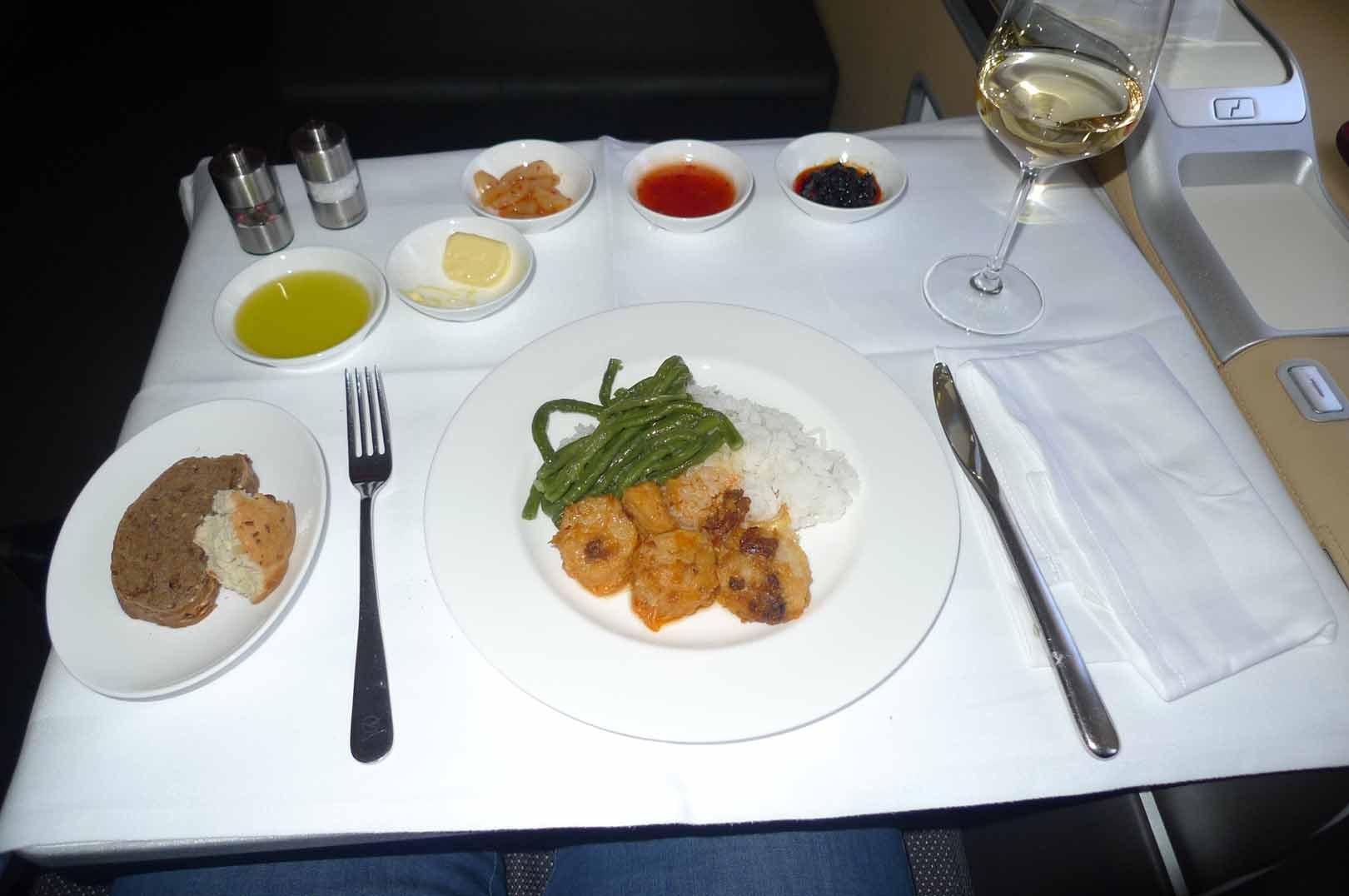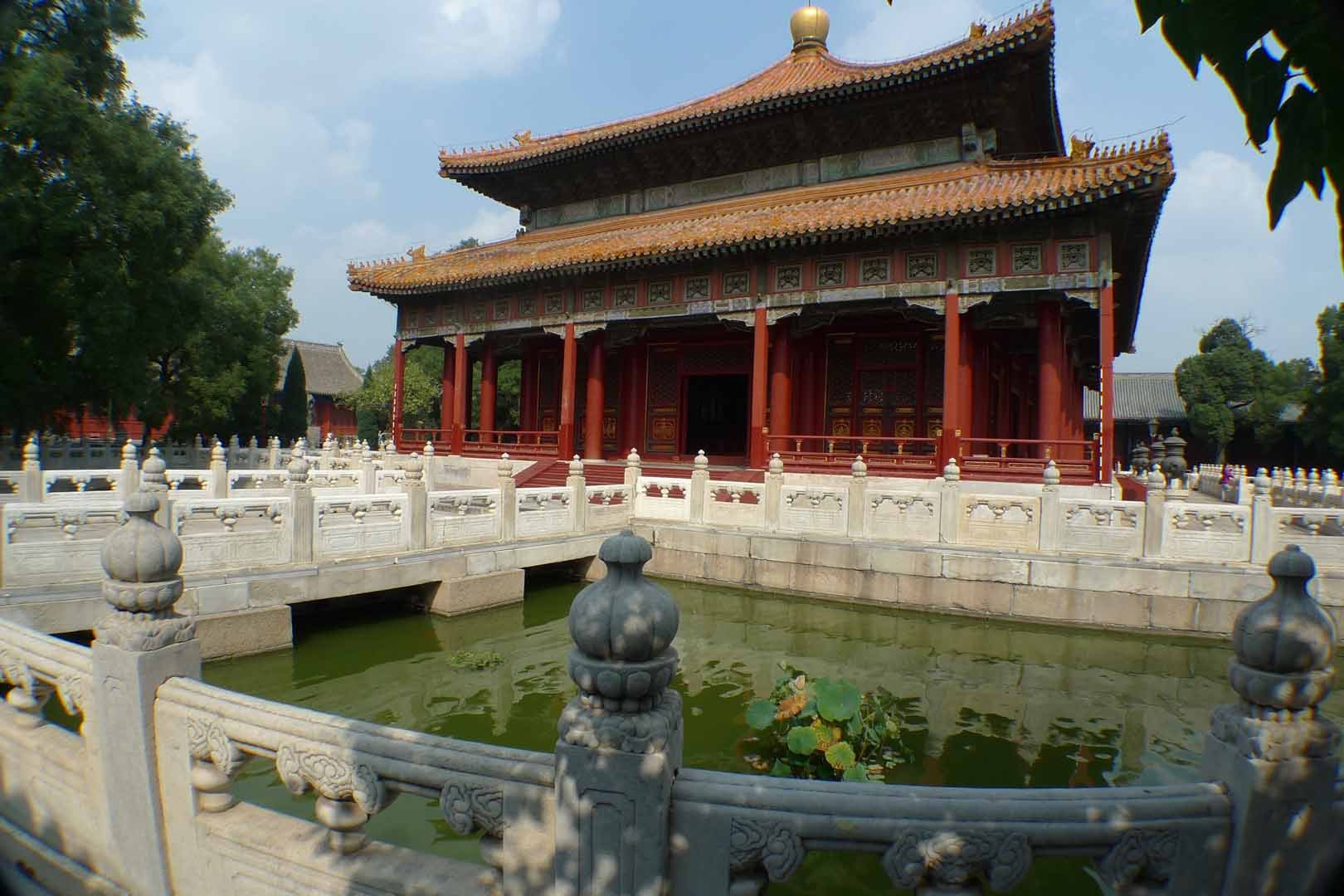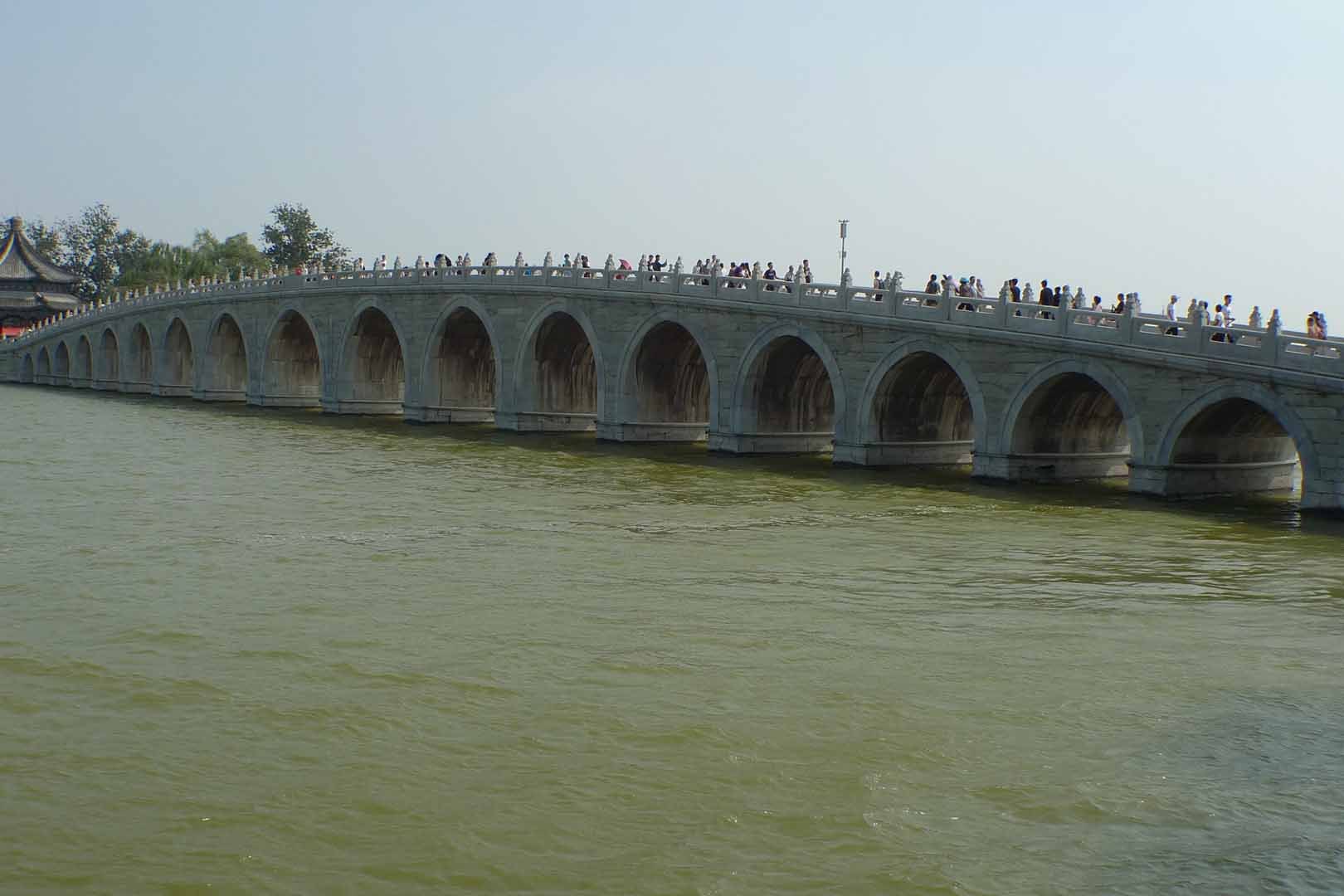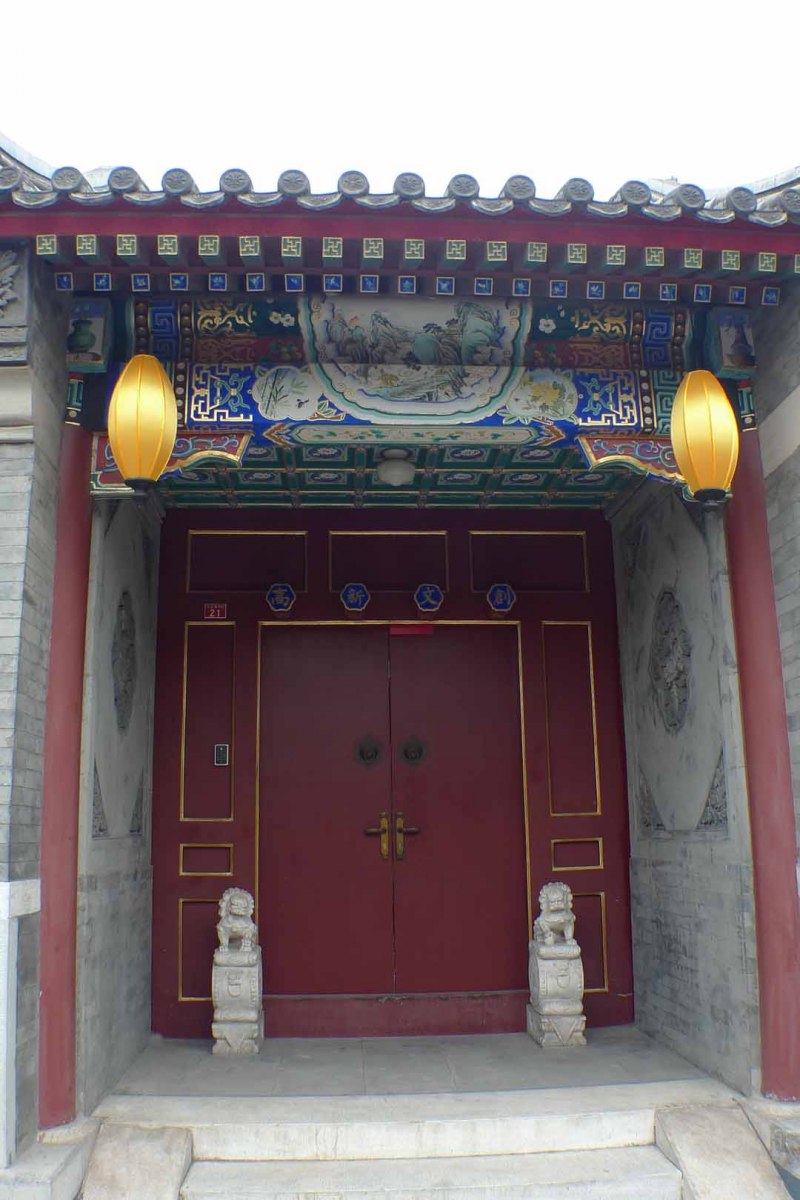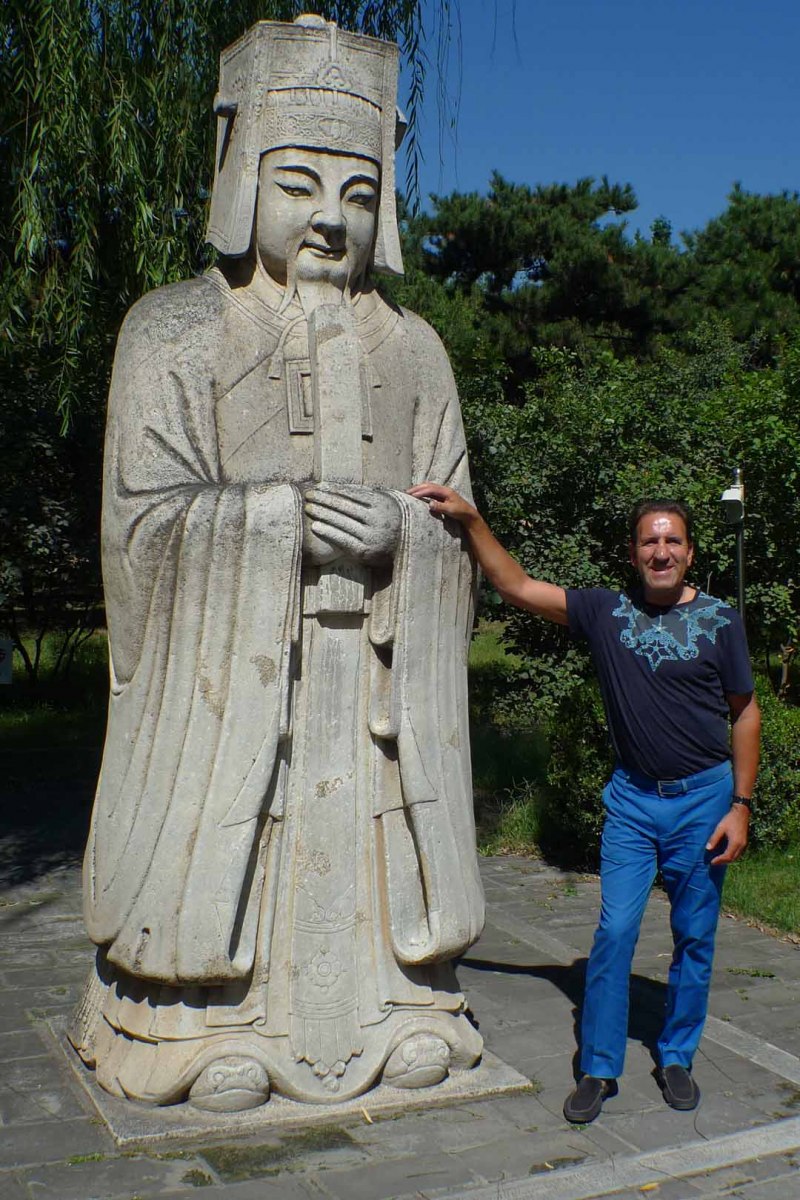Beijing Hotspots
Day 1
Let yourself be driven in the morning in a limousine from The Peninsula to the Lama Temple (Yonghegong). The largest Buddhist temple monastery in Beijing is a 15-minute drive away and is inhabited by Lamaist monks. The drum tower and also the bell tower are particularly vivid. Dalai Lama’s throne on which His Holiness sat to recite Buddhist sutras is another highlight in this area.
Not far from this impressive temple complex is the Confucius Temple. You can easily walk there while your driver will be waiting for you.

The statue of the sage Confucius guards the entrance of this beautiful temple complex. Allow about two and a half hours to visit both sites. The drive to the Temple of Heaven will take about fifteen minutes again.


In the afternoon you should pay an extensive visit to the famous Temple of Heaven (Tiantan), an imperial sacrificial altar. Surrounded by green pines, the white marble terraces add the finishing touch to this classic Chinese architecture. Don’t forget to try out the Echo Wall! The sound is remarkable!

In the late afternoon, if you have the desire, energy and mood, you can explore the neighborhood around The Peninsula. If you rather check out a museum, Beijing offers a diverse selection: Museum of China, Luo Hong Art Museum, Beijing Automobile Museum, China Railway Museum Dongjiao or Zhengyangmen, China Avaition Museum, Capital Museum, National Art or the famous Chinese National Museum. If you want to relax, pamper yourself at The Peninsula’s spa, because in the evening you should dine well rested at the famous “temple restaurant” TRB Hutong.





You’ll need to book this stylish restaurant in advance. Don’t be put off by the path way that gets you there! It leads through a dark, local alley. Unfortunately, many taxi drivers don’t know the address, but the trained The Peninsula Driver will gladly take you in a 15-minute drive to number 23 Shatan North Street. www.trb-hutong.com
Day 2
Full day excursion
After a rich breakfast buffet at The Peninsula, you will get back into the hotel’s limousine at 8:30 a.m. at the latest. You will first drive a few kilometers on the ten-lane Boulevard of Eternal Peace, the 40-kilometer-long road to Tiananmen Square. This square can hold a million people. Here, for example in 1976, millions of people gathered to pay their last respects to the people’s hero Mao Zedong.
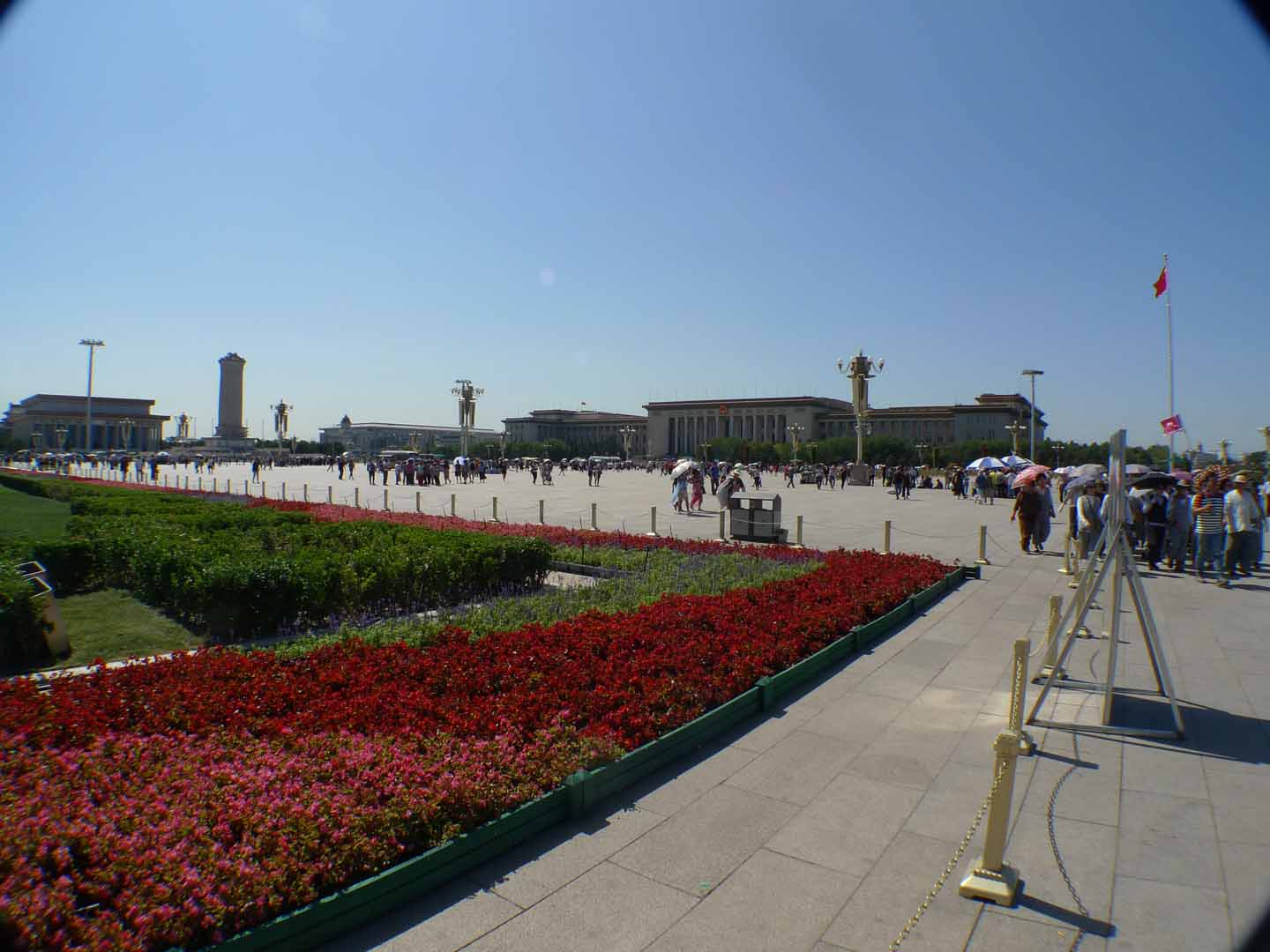

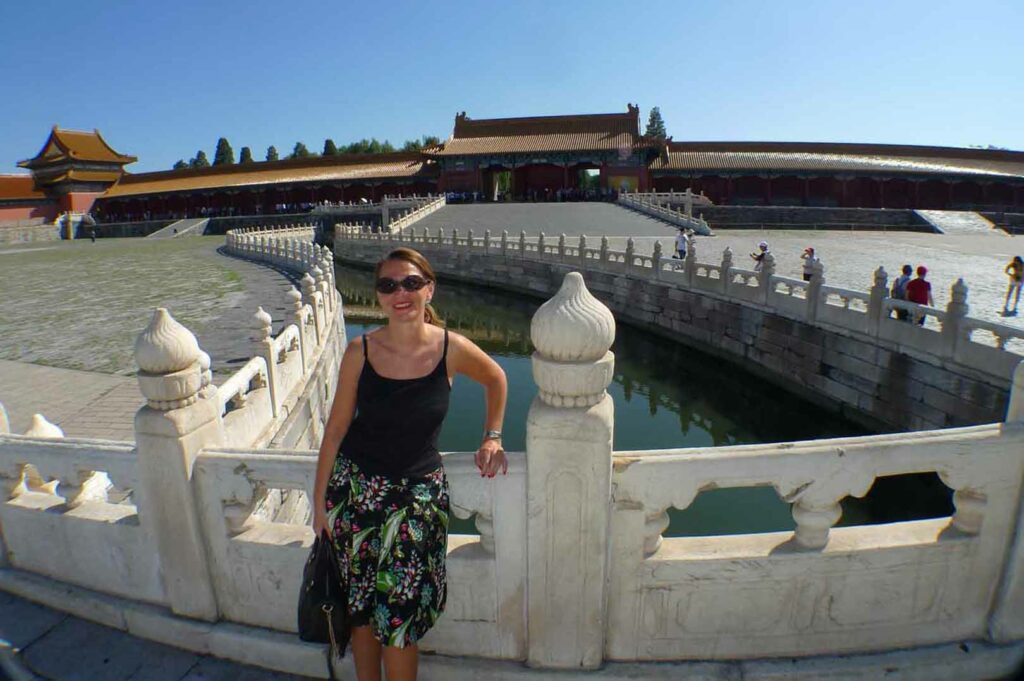
Also look at the portrait of Mao, framed by political slogans (Long live the great unity of the peoples of the world! Long live the People’s Republic of China!) as you enter the Imperial Palace (Gugong). Attention: You must register in advance and show your passport. The concierge at The Peninsula will do this registration for you the night before! You will have to explore this historic Forbidden City, a gigantic area 950 meters long and 750 meters wide with its four gates in every direction, on foot. Plan at least 3 hours and be there early in the morning to escape the crowds. Forbidden City has been a UNESCO World Heritage since 1987.
Around 12:00, the driver will take you to the Imperial Summer Palace in northwest Beijing, a highlight of Chinese architecture. It has been a UNESCO World Heritage Site since 1998. Because of its relentless, never-ending and ever steeper stairs, I recommend the north entrance. This way you only have to walk down the stairs to Kunming Lake. Your driver will pick you up there later.

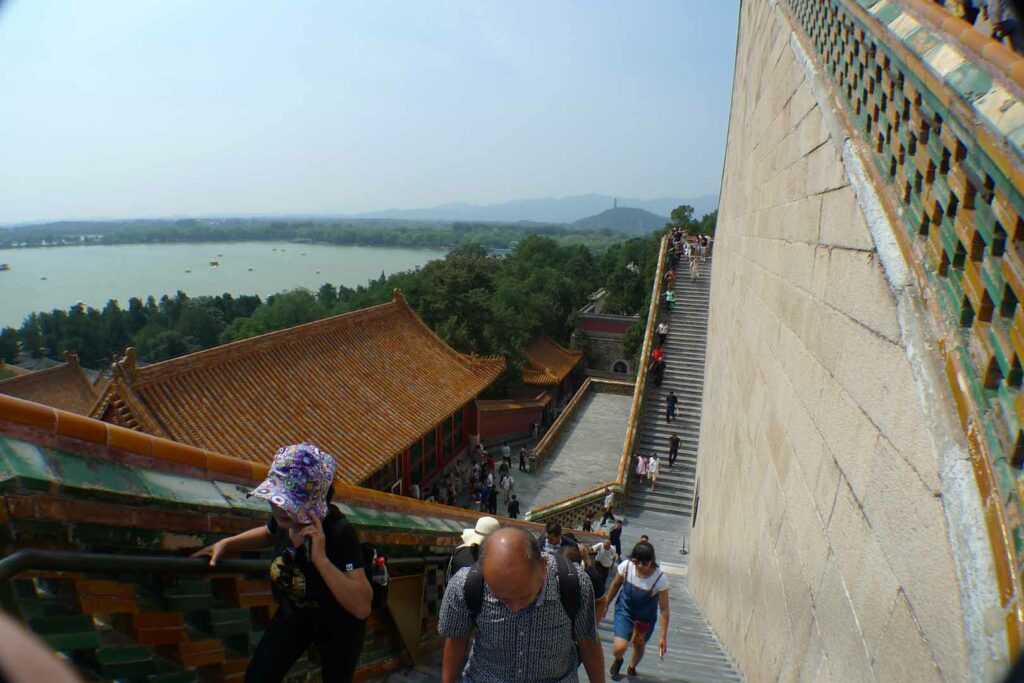
Plan at least four hours for the Summer Palace, a gigantic area with impressive halls, pagodas, gardens, streams and let you glide in a dragon boat in the afternoon across the lake.
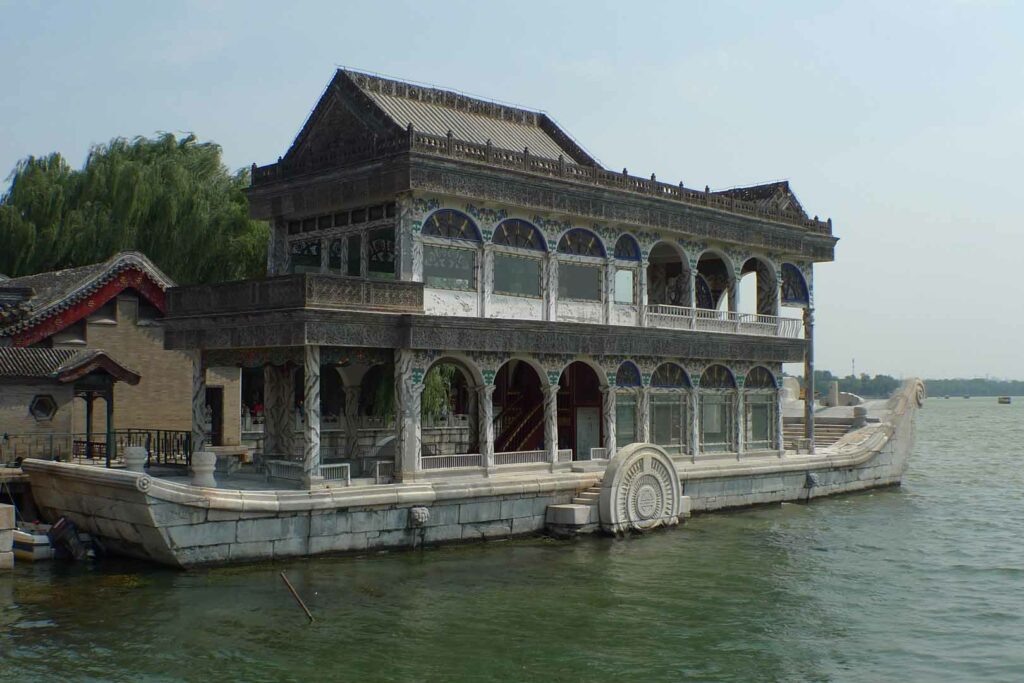

There is truly a lot to see and discover, be it from a historical, political, architectural, religious or scenic point of view. The four hours allotted will only give yourself a good idea. Let yourself drift, visit the temples that “call” to you; but do not forget the majestic seventeen-arched bridge nor the artfully curved Jade Band Bridge. You can’t miss the 728-meter-long walkway either, a successful symbiosis of architecture and art gallery, as you stroll down to the lake from the north entrance.
An insider tip is the Aman at Summer Palace. As you know, the luxury hotel chain Aman always chooses extraordinary locations for their hotels. I will test the Aman for you on my next visit to Beijing. I didn’t choose it this time because it’s too far from the city for me (about a forty-five minute drive with quiet traffic). Guests of the Aman have a secret entrance to the Summer Palace! I will tell you about it!
Day 3
Today you should take it easy. I suggest a trip to the original, authentic Beijing. Thanks to Peninsula Academy, you can even visit a Chinese family. You will get an interesting insight into the private life of this family and learn interesting facts about Chinese culture, traditions and living conditions.


With a bicycle rickshaw you will continue through the narrow, winding streets of the old town, the so-called Hutongs, at the Shichahai lake area. Let yourself be driven and visit the Drum Tower, one of the old landmarks of the Chinese capital, in the Gulou district. The climb is arduous, but it’s worth it because 21 of the original 25 drums are still standing and the drums are beaten several times each day. We got there at 11:30 and experienced an impressive ceremony.
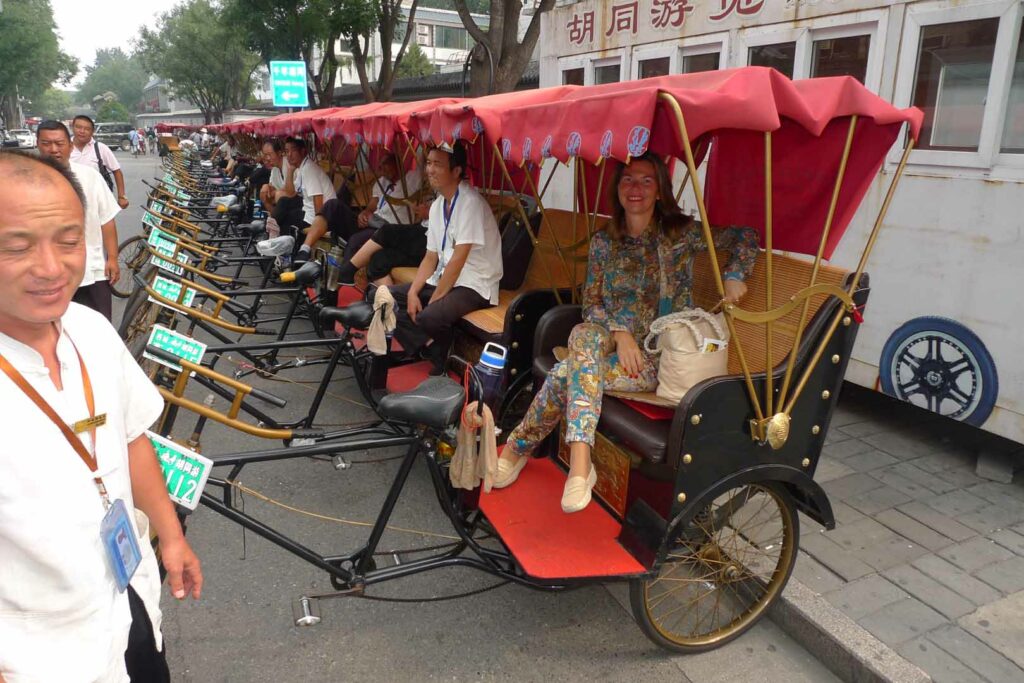

The excursion ends at a private teahouse (Tang Ren Cha Dao) with two simple but gracefully traditional rooms separated by a small, neat courtyard with a laughing Buddha. This Chinese lucky Buddha, a figure with a small, fat, bare belly and beaming face greets you as you enter.



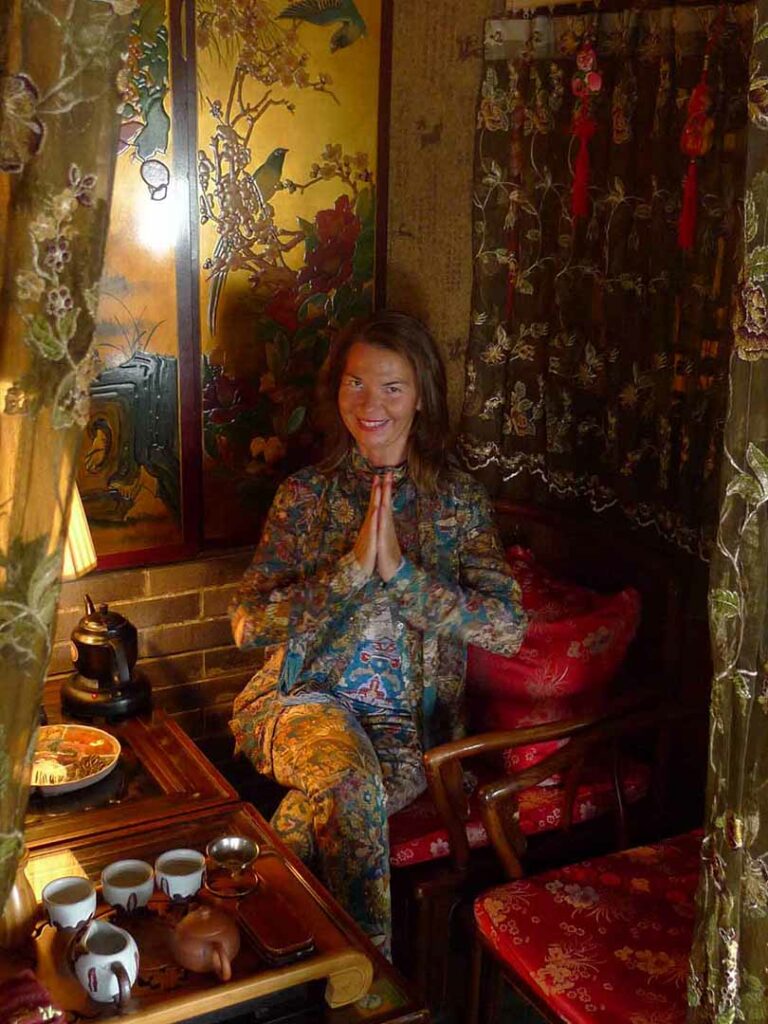
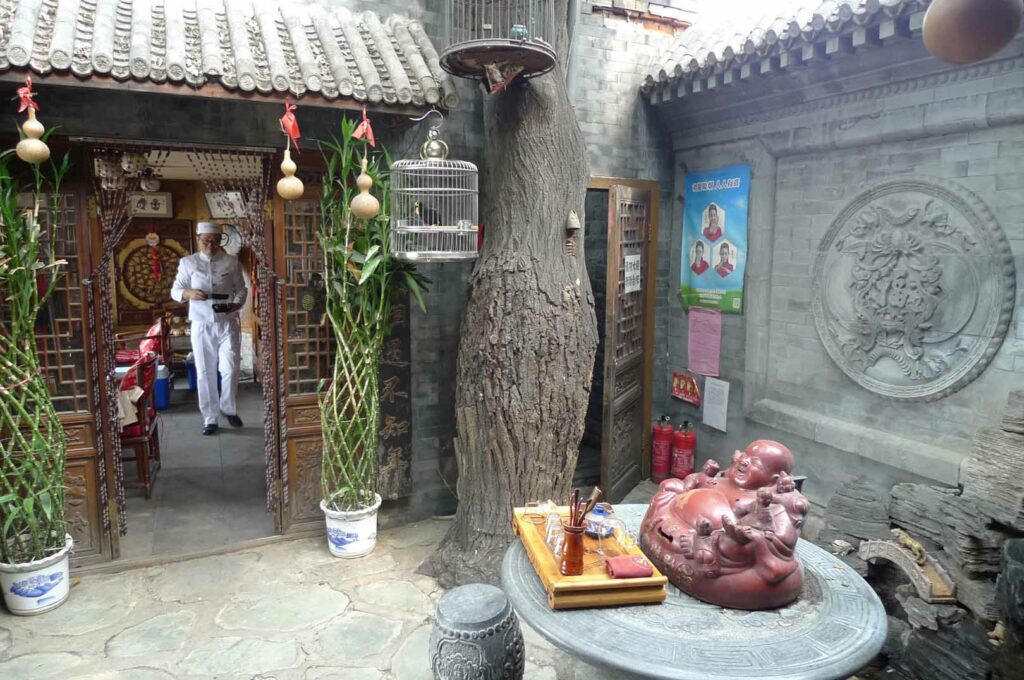
Day 4
Full day excursion
Today you will experience – thanks to the wonderful Peninsula Academy – a day you will never forget. The limousine is ready at 7:30 am and takes you to the Great Wall (approximate driving time 90 minutes).
The largest structure in the world winds its way through eleven provinces over a length of 8,800 kilometers. As one of the greatest creations of mankind, the Great Wall of China unfortunately also symbolizes the longest cemetery in the world, because over a million people lost their lives during the construction of this marvel of antiquity. Although today many parts, even whole sections are in extremely poor condition due to weather conditions, many watchtowers are covered with plants and cracks, the Great Wall still impressively displays the iron will and power of the Chinese Empire. Thanks to your arrival before 9:00 am, you can immediately board the Badaling Cableway, a modern gondola, without queueing. Of course, you can also ascend on foot. Badaling is the most popular section of the Great Wall of China (about ten million people visited this popular site annually before Corona), as it is only 80 kilometers from Beijing.


Allow two hours for this visit with ascent and descent in the gondola. This grandiose experience is followed – a few kilometers further on – by the highlight of the day. Your chauffeur stops at an unspectacular parking lot and asks you to get out. A bellboy from The Peninsula opens the car door for you and accompanies you to a remote platform on the Great Wall, surrounded by a magnificent landscape. The absolute highlight stretches a few meters further: a set table with a spotless white tablecloth, two chairs with white covers and white ribbon, high-quality Chinese porcelain. As if in a trance, I took a seat. I couldn’t believe my luck. You have to book this excursion because you dine with a unique view of the forested heights and an exclusive view of another section of the Great Wall. Honestly, I felt sorry for the waiters in typical Peninsula uniform as they lugged everything up here, set it up and later cleared it away.


After this phenomenal experience, we headed back towards Beijing, but there’s one last stop you shouldn’t forget: the famous Ming Tombs, a UNESCO World Heritage since 2000. They cover an area of about 50 kilometers. You should decide in advance which tombs you want to see. An absolute must is the so-called Soul Path, the Sacred Path of the Ming Tombs. The seven-kilometer-long path is decorated on both sides in pairs, once standing and once lying, with stone sculptures of humans (officials of the emperor) and animals (mostly mythical creatures). These symbolized his honor guard during the emperor’s lifetime.

Important Notes:
Getting there:
For a short trip, I would fly again from Frankfurt or Munich to Beijing with Lufthansa on First Class (as long as it still exists). Let’s hope that the First-Class Terminal in Frankfurt doesn´t fall victim to the Corona crisis.


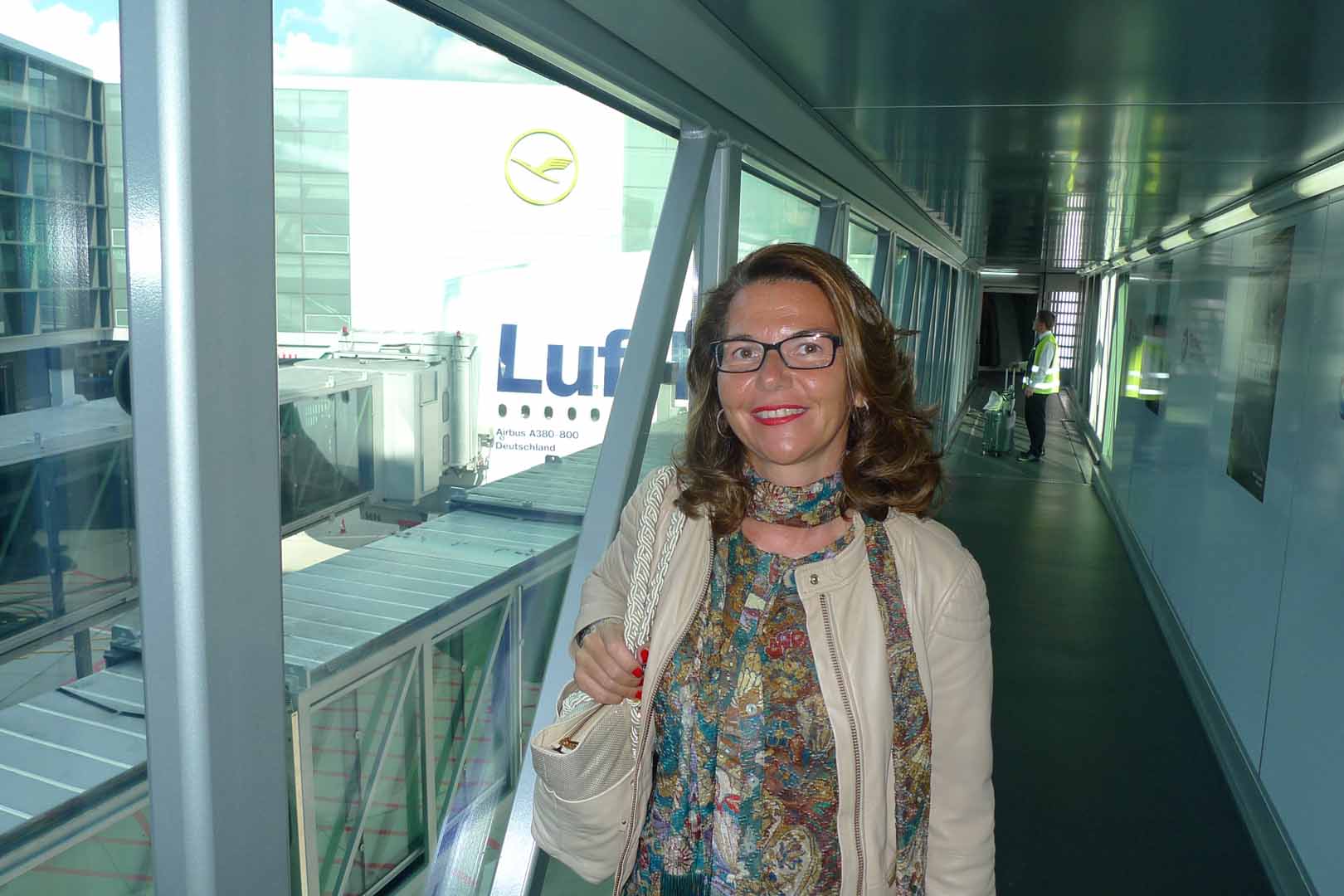
Thanks to the late afternoon flight (LH720), you will arrive well rested in the morning in Beijing and can enjoy the day: www.lufthansa.de
If you have more time available, I recommend Emirates First Class: www.emirates.com
Weather:
Beijing often struggles with dense fog (smog). Nevertheless, there are sunny days in the imperial capital that are not shrouded by a bell of exhaust fumes. Personally, I can recommend the month of September. It’s still 25 degrees, but the heavy August rain is over. October also offers nice sunny days, although it is a bit colder in the morning. May and June are also good for travelling to Beijing, but unfortunately a bit rainier. I would not visit Beijing from November to April, as there are sub-zero temperatures until March and the cold wind can be very unpleasant.
Taxi drivers:
No cab driver understands English. You must have your destination written down in Mandarin beforehand and you must always have the name of your hotel with you, always written in Chinese. The friendly drivers at The Peninsula are also barely proficient in English. However, the concierge will inform the driver in advance where to take you. If you wish, he will also organize a guide who speaks perfect English. Or you learn Mandarin and speak with the chauffeur yourself?
Have fun in Beijing,
your Amal









